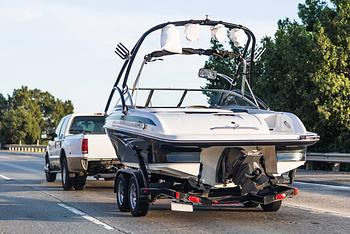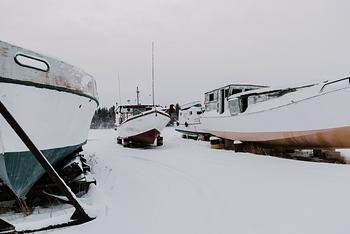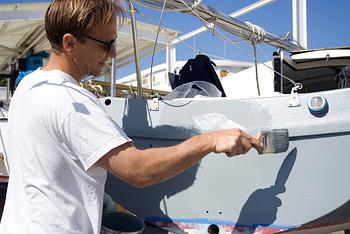We all love sailing. It’s challenging, exhilarating and relaxing. Nothing beats the spray in your face and the wind in your hair. However, no matter where and what you sail, one factor must be considered first. Safety.
Sailing has some inherent dangers but by applying a few basic rules and guidelines plus a touch of plain old common sense, you can help to minimize any hazards. In this guide, we’ll look at a few of the steps we recommend that you consider when you set sail to help keep yourself and your crew and passengers safe at all times on the water.
-
Life Jackets/lifebelts
It may sound obvious, but life jackets and life belts are the very first line in essential sailing safety. Before you set sail, ensure that every person aboard knows how to fit their vest and that they fit correctly. A good way to tell if a life jacket is fitted correctly is to fit and adjust the jacket then lift from the shoulders. It should not be possible to move the jacket. If it slides up, then try a smaller size or tighter fit. Always refer to the manufacturer’s guidance before use. A well-fitted jacket should keep your mouth and nose as high above the water as possible.
Only use PFDs (Personal Flotation Devices) that carry the CE mark and use the correct level of equipment for your craft. A level 50 PFD is intended for dinghy sailors, kayakers or personal watercraft users. Level 100 PFD are to be recommended for calm and sheltered waters but not for those who are unable to help themselves in the water. Level 150 PFDs are intended for general use on coastal and offshore waters. A level 150 PFD will keep an unconscious person’s face clear of the water. Level 275 PFDs are recommended for offshore use, especially when wearing heavy, protective clothing and are designed to keep an unconscious person’s face clear of the water. If you are travelling with children be sure that their life jackets fit correctly. It’s a good idea to assign life jacket with a sticker affixed so that everyone knows which jacket is their personal one. Inspect all your life jackets regularly for any damage and replace any damaged ones immediately. A good rule of thumb is to start using life jackets if the winds reach force 6 on the Beaufort scale, however, it’s also good practice to wear them at all times on board. Attach any safety belts to stable fastening points and not to the ship’s rail. The number one cause of death whilst sailing is falling overboard when peeing over the side at night so don’t be tempted to skip wearing your life jacket!!
-
Be Prepared
Ensure you are stocked with enough food and water for your trip including emergency provisions. Check for expiry dates on all provisions and safety equipment before you leave harbour and replace if needed. Ensure you have a good and fully stocked first aid kit on board and that all passengers are aware of its whereabouts. Again, check for expiry dates and replace items as needed. Check you have the appropriate fire extinguishers on board and check their expiry date and replace if necessary. Visit here for Fire safety guide on boat. Don’t forget essentials such as sunscreen and a few extra hats. Don’t sail on an empty stomach as this will lead to seasickness far more easily than on a full one. Prepare any snacks or meals before you leave to minimise time spent below deck. A pilot always carries out a pre-flight check of his aircraft and any sailor should do the same with their craft. To make things easier, use a Pre-departure checklist for the boat, as guidance.
-
Plan Ahead
No matter what level of sailing experience you have, always plan ahead of time. Obtain local charts of the area you plan to sail and study and plot your course before you set out. Check the weather and conditions to help you judge the best time for sailing and use them to help guide your choice of attire and equipment needed. Wear shoes with a non-slip sole especially when docking. Familiarize yourself with any local sailing rules and regulations. It’s a good idea to draw up a float plan consisting of names and contact information for all on board, details of the boat, signaling equipment (including ERIRBs, radios, boat phones, etc) and the trip itinerary. This should then be left with a responsible person who is not going to be on board for the trip. They can then pass it on to the coast guard/rescue services in event of the worst-case scenario. The right clothing and footwear are essential for safe sailing. Ensure you have all the necessary equipment for calling for help. The Global Maritime Distress and Safety System (GMDSS) is the internationally recognized way of calling for help at sea. Use devices such as VHF/DSC and personal locator beacons which comply with GMDSS. Check the deck for any trip hazards such as ropes, cleats and other equipment and minimize the risks by tidying as much as possible.
-
Apply Common Sense and Sailing Know-How Effectively
With most things in life, common sense goes a long way towards minimizing potential dangers and sailing is no exception. Before you set sail, run through the various scenarios which could arise and think of how you could eliminate/ minimize any hazards. Keep an eye on the weather at all times and if you see the clouds begin to darken unexpectedly or the wind picks up, then play it safe and head back to harbour. If possible avoid overcrowded areas. Put simply, the more craft in the water, the more chances there are of collisions. Keep hydrated at all times but no matter how tempting that G&T looks, avoid alcohol and drugs whilst sailing just as you would when getting behind the wheel of your car. Don’t ignore your swimming skills. If you’re not proficient in the water, then strongly consider taking classes to improve your skill and confidence. Strong swimming will increase your survival chances in the water. If possible, avoid sailing solo. Not only is a companion good company, they may save your life. Know your boat and any handling foibles and consider any sailing classes which could increase your skill-set. Every year the RNLI launches to almost 2,000 vessels with problems which could have been dealt with by skippers with correct preparation. Use the ASSESS system as a guideline:
- A- Anchor- Can it be deployed quickly to give you time to think about and fix a problem?
- S- Skin Fittings. Are they regularly serviced? In case of failure, do you have a bung ready for each?
- S- Steering Gear. Has it been serviced? Do you have alternative means of steering if it fails?
- E- Engine. Is it regularly serviced? Can you bleed it and change filters? Do you carry spares?
- S- Safety. When are your life raft and life jackets due to be serviced? Have you got a grab bag ready?
- S- Supplies. Do you have enough fuel, water and food for the trip and extra power to spare?
No matter what level of sailing skills you have, there’s always room for improvement so consider taking an RYA sailing course details. Always sail at a safe speed, particularly in crowded areas. Stay alert at the wheel and keep clear of larger vessels. Always respect buoys and other navigational aids. They are there for the safety of both yourself and other sailors. If you are driving a powerboat, RIB or personal watercraft, ensure you are wearing your kill cord. This ensures that the engine will stop when the driver is away from the controls. Check your chord for any signs of wear and always attach it securely.
-
Proper Sail Practice and Line Handling
One of the greatest aspects of sailing is the harmony between man and the elements. However, with this comes certain hazards. It’s important to respect both the power of your boat and the elements and not to become blasé at any point. Always be aware of all the moving parts of your boat including spars and booms as well as anything not tied down. Remember a boat is always moving and thus everything on board will move to a certain degree. Keep your wits about you and remain watchful always. Keep your deck clear and stow your sails quickly and safely. Luffing sails will affect your passage so ensure you are proficient in at least sea-stowing once they are doused. Make sure lines are coiled and hung correctly to avoid snags, knots, and loops as well as tripping hazards. Wear a safety harness and alert anyone on board when you are going aloft. Don’t forget to clip on! Practice good line handling and, if you have winches or any other line-controlling equipment, ensure that they are fully operational and that you understand their correct use. When working with lines, always “palm” the line against its rail or the drum of the winch to ensure tension when you are making fast or readying a line. Never step inside a coil of line or wrap the line around your hand (or any other part of your body). Don’t forget, the ropes themselves may not appear dangerous but the things attached to them may well be.
-
Emily’s Code
On May 2nd, 2015, 14-year-old Emily Gardner tragically drowned in a boating accident. An ill-fitting buoyancy aid snagged on the cleat of a capsized speedboat. In her memory, her family helped draw up the following mnemonic to highlight key safety messages and they provide a great rule of thumb for any sailor to follow:
Emily's Code Message for Sailing Boats
Related Articles and Guides
29th Mar 2024
How to Transport Your Boat Four Different Ways
18th Oct 2023
How to Winterize a Boat: Steps, Checklist and Costs
20th Sep 2023
Painting a Fiberglass Boat: A Detailed Guide
19th Sep 2023







